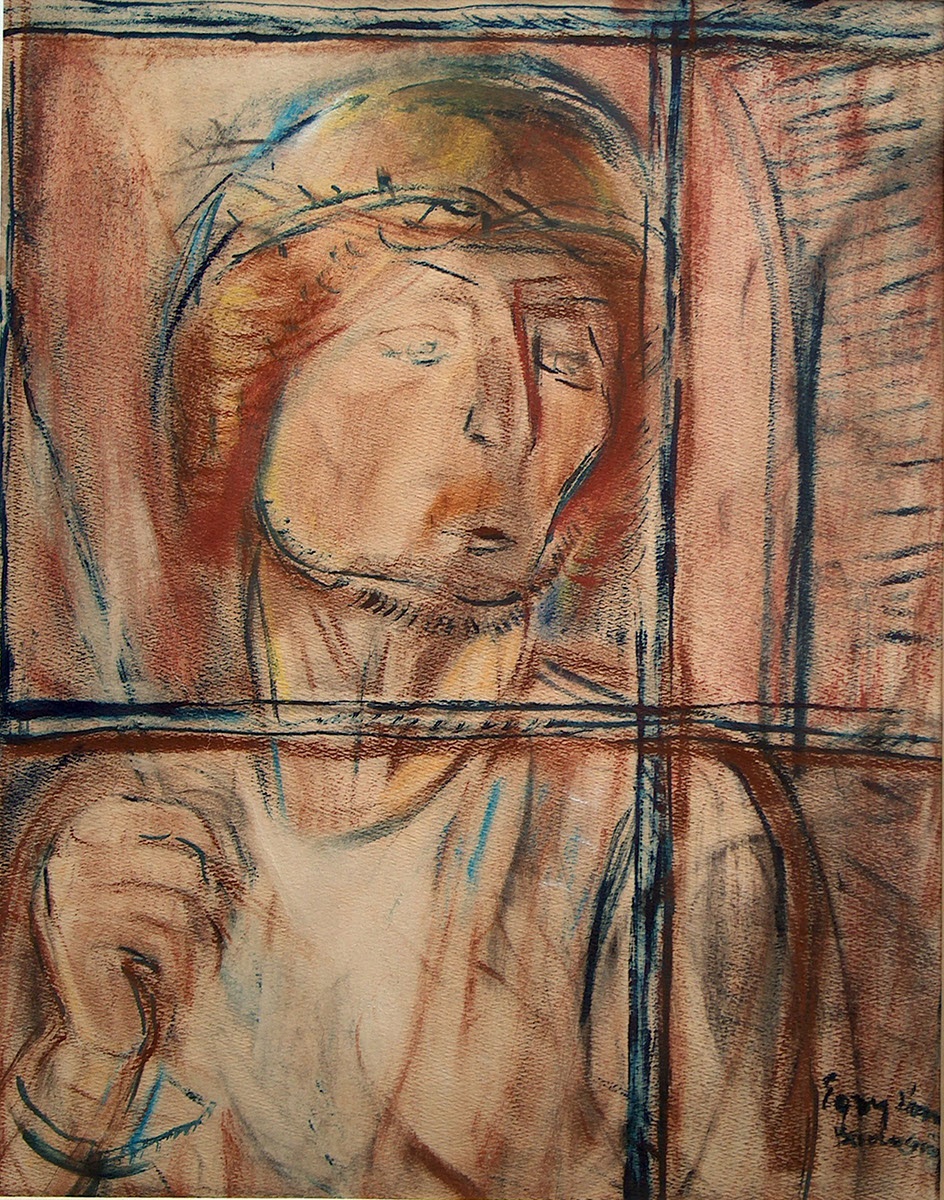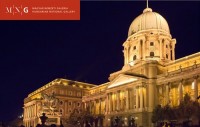Self-portraits were present throughout Egry’s oeuvre from the very beginning of his career and his facial features can often be recognized in the characters of some of his other compositions. Like in the case of other artists working in the 1920s and 30s, besides the concealed self-portraits, a special group is formed in Egry’s art by psychologically analytical or role-playing – role assuming self-portraits, on which the entire process of the artist’s self-discovery can be tracked. His facial features often appear in biblical stories. Representations of a struggling man with an alarmed look, being increasingly abandoned, relentlessly looking us in the eye were created as visual self-confession of a dramatic force, especially during the harsh years of World War II. Christ with Crown of Thorns is a significant work created as reconciliation after psychological struggles and pains in1941, in which Egry identifies the tormented man who accepts his fate and hopes for redemption with the figure of a tortured Christ suffering behind bars.
en

